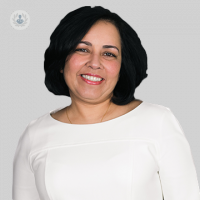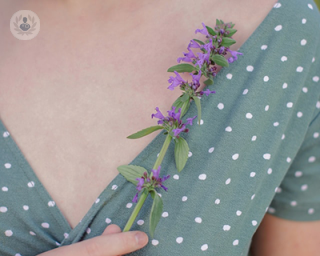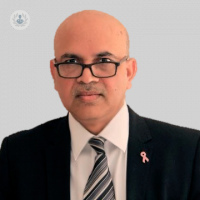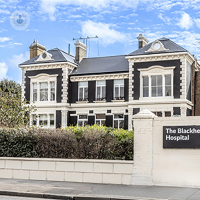Mastalgia
What is mastalgia?
Mastalgia is the medical term for breast pain. There are two main types of mastalgia – cyclic and non-cyclic.
Cyclic pain is connected to the menstrual cycle and, as such, usually occurs monthly. It usually manifests in both breasts, but can be limited to just one, or can also radiate to the armpit and/or arm.
Non-cyclic pain is not linked to the menstrual cycle. It most commonly occurs in women in the 30-50 age range. It is usually limited to one part of one breast and is usually present all the time.

What are the symptoms of mastalgia?
Mastalgia is a symptom rather than a diagnosis, and presents in different ways depending on the type.
Cyclic mastalgia:
- Tends to be a feeling of soreness or heaviness
- Tends to occur in both breasts, and sometimes the associated armpits and arms
- Occurs monthly
Non-cyclic mastalgia:
- Sharp, burning pain
- Usually occurs in one part of one breast
- Usually present at all times
Mastalgia is more common before the menopause.
What causes or produces it?
Cyclic mastalgia is thought to be caused by the normal monthly changes in hormones, but the reasons why this should cause pain, or why it affects some women to different degrees, while not affecting others at all are not fully understood. Research is ongoing, with various theories regarding hormone levels.
Non-cyclic mastalgia may be caused by trauma (a blow to the breast), pain in the chest of neck (perhaps caused by arthritis) radiating to the breast, or possibly a cyst or fibroadenoma (a firm, noncancerous tumour).
It is unusual for breast cancer to cause breast pain, but in some cases painful lumps may be cancerous.
Sore breasts may also be a sign of pregnancy, or brought on by breastfeeding.
How can it be prevented?
You cannot prevent all causes of breast pain, but it is possible to prevent some tenderness and discomfort caused by exercise by wearing a well-fitting sports bra.
What is the treatment for mastalgia?
Treatments vary depending on the cause of the mastalgia.
For cyclic mastalgia, dietary changes, such as cutting out caffeine, reducing fat intake, and taking vitamin E are sometimes recommended. In some cases, medication in the form of hormone supplements, or conversely, hormonal blockers may be prescribed to try to correct a hormone imbalance, but due to possible side-effects, these options should be thoroughly discussed with your doctor. Painkillers may also be recommended, depending on the case.
Non-cyclic breast pain could have a number of different causes, so treatment is very much dependant on the diagnosis. Painkillers, anti-inflammatories, and compresses are often ways to manages the symptoms, but if the cause is a cyst of fibroadenoma, surgery may be necessary. The treatment always depends on the individual case, so you should always consult a doctor when confronted with mastalgia.







